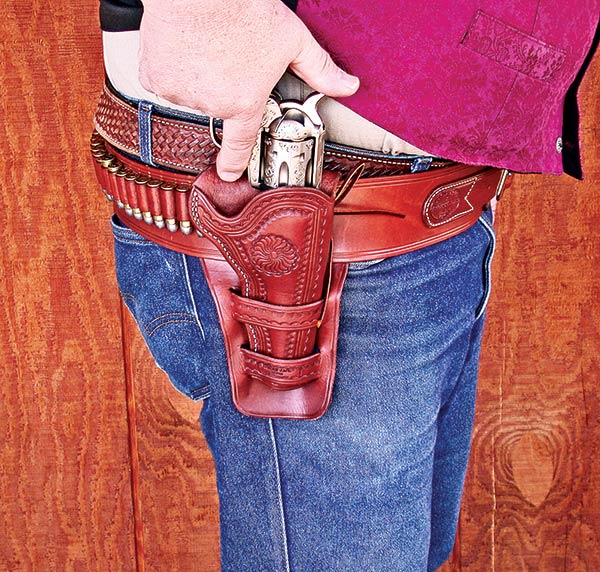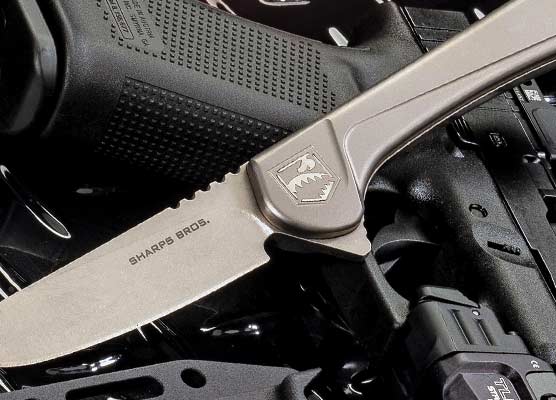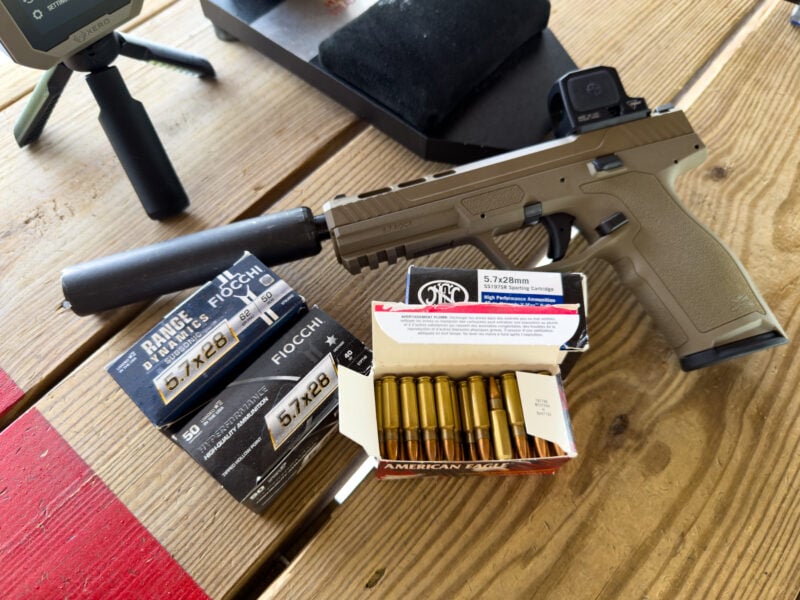Single Actions For
Self-Defense?
From 1836 through the Mexican-American War, the War Between the States, the great migration West and even up to the World War I era, the single-action sixgun was the top choice for not only self-defense but also just about everything else. Admittedly, a few double-action sixguns arrived in the percussion revolver period, and both Colt and Smith & Wesson introduced double-action revolvers around the late 1870s/early 1880s. These were basically single-action models with the double-action system added. The modern double-actions arrived in the last decade of the 19th century with the Colt New Service and the Smith & Wesson Military & Police. At about the same time semi-automatic pistols began to appear, culminating in the great 1911.
Even with the arrival of the modern handguns, many such as the Texas Rangers held on to their single-action Colts. However, by the middle of the 20th century even they had switched over to double-action sixguns and semi-automatic pistols. But, are single-actions still viable for self-defense?
Cut The Clutter
After the arrival of the Hollywood Fast Draw Holster, all the good guys and bad guys in the movies cocked their single-actions in the leather. To prove how dangerous this is, in the early days of fast draw with live ammunition more than a few who were quicker on the trigger than on the draw shot themselves in the leg. Even when they switched to wax loads they still had a metal deflector down the backside and across the bottom of the holster in case of a negligent discharge. We must forget everything we’ve ever seen on the large or small screen when it comes to handling a single-action sixgun.
Before we go any further, I’m not suggesting single-actions are the best choice for self-defense. In fact, unless one is willing to unlearn everything taught by make-believe and start learning the right way to handle a single-action, it’s no choice at all. While for many years I thought the best choice was a double-action sixgun, we’ve so many excellent semi-automatics available today it’s a toss-up between the two of them.
For years the heavily loaded single-action has been the best choice for self-defense against four-legged critters bent on biting, clawing, even killing us. The single-action is the easiest to pack, the most portable, and has been chambered for such powerful cartridges as .454 Casull, .475 and .500 Linebaugh. However, with animals of lesser size and gentler temperament than the big bears, such as mountain lions and black bears, the need for such power doesn’t necessarily follow. These critters are much easier to stop and the .44 Magnum, .45 Colt and .44 Special — all in single-action, all properly loaded — will do just fine. So here we’re looking mainly at the single-action sixgun as an everyday carry gun wherever we may happen to roam, be it on concrete, sagebrush, foothills, forests or mountains.
Where It Counts
The decision to carry a gun is one of the most important decisions in this life and it must not be considered lightly; regular practice is a must. Practice should not only include shooting but also drawing from the carry position and reloading; this is even more imperative with single-actions than with the other types.
One very important aspect of safety arises with a traditional single-action sixgun, this being if the hammer is cocked and one decides not to fire. Then what? With the older style single-actions such as the Colt Single Action Army, the Ruger Flat-Tops and Old Models, and the replica imports carried with an empty chamber under the hammer, once a gun’s cocked the cylinder rotates and the hammer will now be let down on a loaded chamber. This is dangerous and must be avoided.
This should be practiced until it can be done perfectly and, as with loading and unloading, even in the dark. The method is actually very simple. The hammer has been cocked, a live round is under the hammer, and it is necessary to place the revolver in a safe condition without firing it. To do this, the hammer is very carefully lowered as there’s a live round under the hammer! The hammer is now brought back to the half-cock, and the cylinder is rotated as one listens to one, two, three and then four clicks. Draw the hammer all the way back to the full cock and carefully lower it all the way.
If this is done correctly the empty chamber is now back under the hammer. This drill should be practiced with dummy cartridges until it’s mastered perfectly. Practice in the dark and practice blindfolded. It actually sounds harder to do than it is to accomplish.
In The Fight
In every training course I’ve taken as well as police qualification courses I’ve been invited to participate in, one of the scenarios requires covering a suspect with a handgun until help arrives. With a double-action sixgun or semi-auto this is no problem as the former takes quite a deliberate pull of the trigger and the 1911 style semi-automatic can be cocked and ready to fire with the safety on. However, what do we do with single-action sixguns?
If the gun is cocked usually very little pressure is required to fire it. In this case it would be very wise not to cock it but rather leave the single-action hammer at rest until the gun is to be fired and to practice being able to cock and fire with as much speed and steadiness as possible.
Once again, I’m not advocating the single-action sixgun as the best choice for self-defense. However, it’s a viable choice with proper training and practice. In fact, some training enterprises have offered courses in single-actions for self-defense. So, if you’re up to the longer learning curve attached to a single-action sixgun, then get ready and start training!









